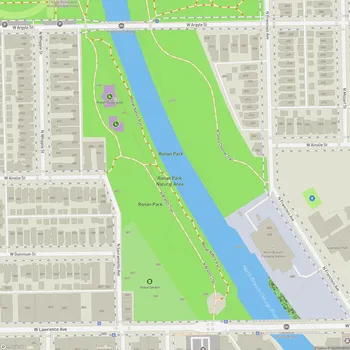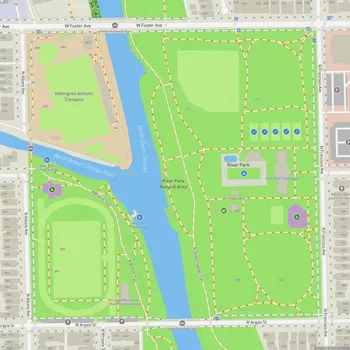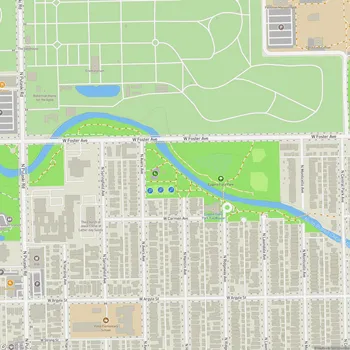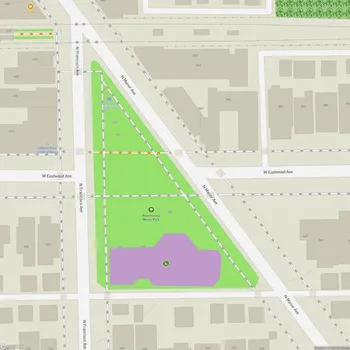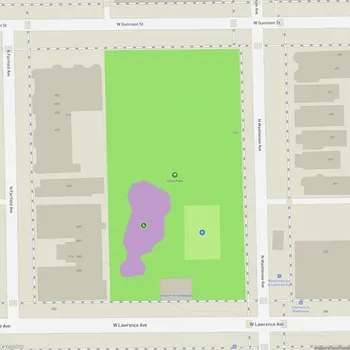Kiwanis Park
Kiwanis Park Map
About Kiwanis Park in Chicago
Kiwanis Park is a passive river walk area located on two acres in the North Park neighborhood of Chicago, Illinois. Situated one block south of Foster Avenue and approximately 2½ blocks west of Kedzie Avenue, the park stretches along the banks of the Chicago River's North Branch.
Originally established in 1917 by the Albany Park District, Kiwanis Park was one of three parks created to beautify the river banks and provide up-to-date facilities for the rapidly expanding population. In 1923, the district purchased a triangular property on the north bank of the river, and improvements began immediately. By 1926, a small brick fieldhouse designed by Clarence Hatzfeld was erected.
The park became part of the Chicago Park District's portfolio in 1934 when the Albany Park District was consolidated with 21 other independent park boards. In 1935, it was dedicated in honor of the Kiwanis Club of Albany Park for their civic and charitable service to the community.
Today, Kiwanis Park serves as an excellent model of good riverside habitat and provides safe public access to enjoy the river. Unlike most areas where the river resides in a steep, inaccessible channel, here the land slopes more gently. A recreational path descends gradually to terraced steps leading down to the river, providing a potential launch or landing spot for kayaks, though low water levels can make this challenging.
In 2002, the area around the river banks was regraded and planted with native grasses and wildflowers such as little bluestem, nodding wild rye, and vervain. Ornamental beds containing roses, daylilies, and purple coneflower add to the park's aesthetic appeal. A foot bridge crosses the river, and on the downstream side, riffles are present, creating a shallow area where the water runs more rapidly, aerating it and providing a fishing spot for herons.
The park also serves an educational purpose, with students from nearby Von Steuben High School collecting water samples for science classes and providing stewardship, making the natural river's edge an educational asset.
